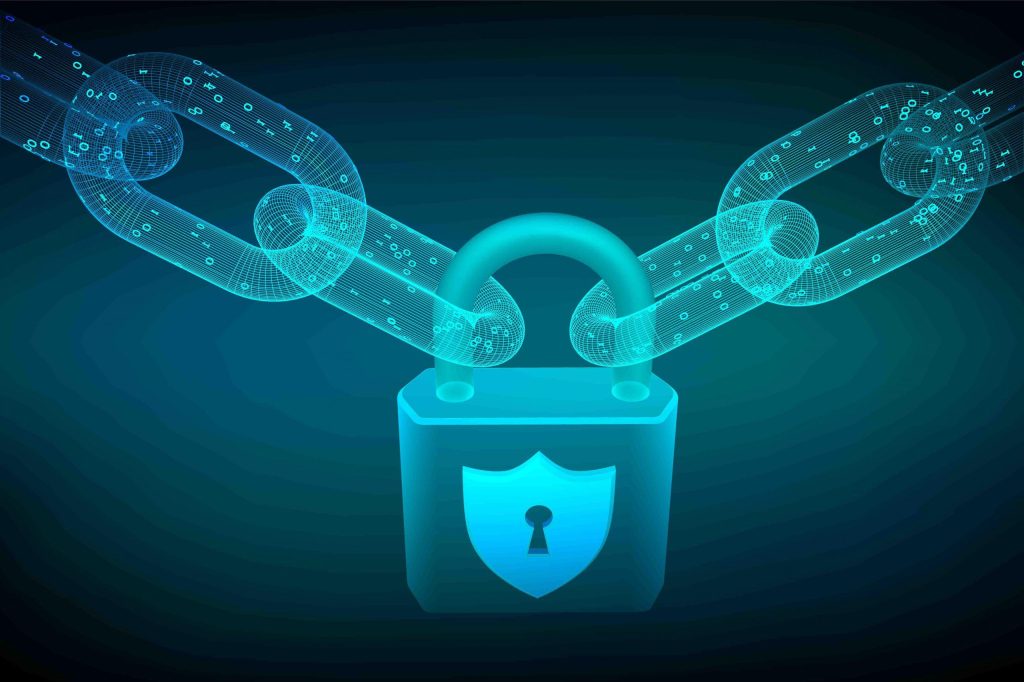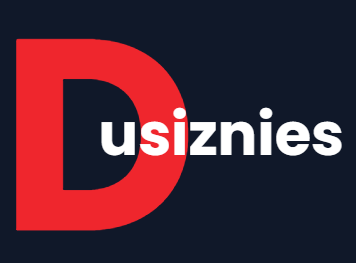A supply chain attack occurs when cybercriminals exploit vulnerabilities in a company’s third-party vendors, software providers, or service partners to gain unauthorized access. Instead of attacking a business directly, hackers infiltrate through trusted suppliers, making these attacks harder to detect and defend against. Because most organizations rely heavily on external vendors for software, logistics, and IT services, the supply chain has become an attractive target for cybercriminals.
Businesses are increasingly vulnerable due to the complexity of modern supply chains and the growing use of cloud-based services. Hackers know that even large enterprises often have weaker links in their vendor networks, and breaching one supplier can give them access to hundreds or even thousands of companies.
The goal of this article is to provide practical, actionable strategies that businesses of all sizes can use to protect themselves against supply chain attacks. By applying these preventive measures, organizations can reduce risks, strengthen vendor relationships, and safeguard their data and operations.

What is a Supply Chain Attack?
A supply chain attack happens when cybercriminals exploit vulnerabilities in a company’s third-party vendors, software providers, or service partners to gain unauthorized access. Instead of breaking directly into a business’s systems, attackers compromise trusted suppliers—such as IT service providers, cloud platforms, or software developers—and use that access to spread malware or steal sensitive information. Because the attack comes through a legitimate, trusted source, it can be extremely difficult to detect until significant damage has been done.
Attackers typically infiltrate by inserting malicious code into software updates, hijacking vendor credentials, or compromising hardware and service providers. Once the corrupted update or service is delivered, the malware spreads to all downstream customers. This strategy allows cybercriminals to scale their attacks, reaching hundreds or even thousands of targets in a single breach.
Businesses of all sizes are vulnerable. Large enterprises often rely on a vast web of global suppliers, creating many potential entry points. Small and medium-sized businesses (SMBs), on the other hand, are often targeted because they have fewer security resources but still rely on third-party software and services. Ultimately, any organization that works with external partners can become a victim, making supply chain security a critical priority.
Why Supply Chain Attacks Are a Growing Business Threat
Supply chain attacks are becoming one of the most dangerous forms of cybercrime, largely due to the increasing reliance on third-party vendors, cloud platforms, and managed service providers. Modern businesses rarely operate in isolation; they depend on software updates, external IT support, logistics providers, and cloud-based solutions. While this interconnectedness improves efficiency, it also widens the attack surface. A single weak vendor can become a gateway for hackers to infiltrate multiple organizations at once.
The consequences of a successful supply chain attack can be devastating. Businesses risk data breaches, financial losses, and reputational damage that may take years to recover from. Sensitive customer information or trade secrets could be stolen, leading to lawsuits, lost trust, and a sharp decline in customer confidence. For small and medium-sized businesses, the financial burden of recovery after an attack can even threaten survival.
In short, supply chain attacks are not only a technical challenge but also a strategic business risk, making prevention a top priority for organizations of all sizes.
Top 10 ways to Prevent Supply Chain Attacks in Businesses
Vet and Monitor Third-Party Vendors
The first step in protecting your business from supply chain attacks is to carefully evaluate third-party vendors before partnering with them. Not all suppliers follow the same security standards, and even a small vendor with weak defenses can expose your organization to major risks. Businesses should establish a formal vendor risk management process that checks a supplier’s cybersecurity policies, compliance certifications, and incident response capabilities.
Monitoring vendors doesn’t stop after onboarding. Regular reviews should be conducted to ensure that partners maintain strong security practices over time. Tools like vendor risk management platforms or continuous monitoring solutions can help track any changes in a supplier’s security posture. You should also require vendors to notify your organization immediately if they suffer a breach.
Practical steps include developing a vendor risk questionnaire, reviewing independent security audits, and incorporating security clauses in contracts that enforce accountability. By treating vendor security as part of your own defense system, you reduce the chances of being blindsided by a supply chain attack. In short, strong vendor vetting and ongoing monitoring create a layered defense that ensures trust in your business relationships.
Implement Strong Access Controls and Zero Trust
Traditional security models often rely on trust within the network, but this approach is ineffective against supply chain threats. Instead, businesses should adopt a Zero Trust model, which assumes no user, device, or vendor is trustworthy by default. This means access is granted only when it is strictly necessary and continuously verified.
Strong access controls begin with the principle of least privilege—vendors, employees, and contractors should only be given the minimum access rights they need to perform their jobs. Sensitive systems and data should be restricted, and administrative privileges should be carefully monitored. Role-based access control (RBAC) and conditional access policies help enforce these rules consistently.
Zero Trust also requires continuous authentication and monitoring. For example, even if a vendor logs in successfully, their behavior should still be analyzed for anomalies. Technologies like micro-segmentation, identity and access management (IAM), and just-in-time access provisioning can strengthen defenses.
By combining strict access policies with a Zero Trust framework, organizations can significantly reduce the attack surface. This makes it harder for compromised vendor accounts to spread malware or steal data, ensuring that even if attackers infiltrate, they cannot move freely within your systems.
Keep Software and Systems Regularly Updated
Outdated software is one of the easiest ways for attackers to exploit a business. Cybercriminals often take advantage of unpatched vulnerabilities in software, firmware, or operating systems to launch supply chain attacks. When businesses rely on vendor tools or third-party software, the risk becomes even greater—if a vendor’s software is compromised, attackers can use those vulnerabilities to infiltrate your systems.
To counter this, companies must enforce a strict patch management process. This means regularly applying updates to operating systems, enterprise applications, and security tools. Automated patch management solutions can help ensure that no system is overlooked and that updates are applied quickly without disrupting business operations.
Equally important is ensuring that vendor-provided software is up to date. Businesses should subscribe to vendor security bulletins, require vendors to follow secure coding practices, and avoid using outdated or unsupported products.
Practical steps include scheduling regular patch cycles, prioritizing critical updates, and maintaining an updated inventory of all hardware and software in use. By proactively managing updates, businesses can close security gaps and reduce the likelihood of attackers exploiting vulnerabilities in their supply chain.
Require Multi-Factor Authentication (MFA) for Vendors
Passwords alone are no longer sufficient to protect sensitive systems, especially when vendors and third-party contractors require access. Cybercriminals frequently steal or guess passwords, making accounts a prime entry point for supply chain attacks. To strengthen security, businesses should require multi-factor authentication (MFA) for all vendors who access their systems or networks.
MFA adds an extra layer of protection by requiring users to provide two or more verification factors, such as a password plus a code sent to a mobile device, or a biometric scan like fingerprint or facial recognition. Even if a hacker manages to compromise a vendor’s credentials, MFA makes it significantly harder to gain unauthorized access.
Practical steps include enforcing MFA at all critical access points, integrating MFA with identity and access management (IAM) systems, and requiring vendors to comply with the same authentication standards as internal employees. It’s also important to educate vendors on how to use MFA effectively and ensure that backup authentication methods are secure.
By mandating MFA, businesses reduce the chances of credential-based attacks spreading through the supply chain, adding an essential layer of defense against infiltration.
Use Endpoint Detection and Response (EDR) Tools
Even with strong preventive measures, attackers may still find ways to infiltrate through the supply chain. That’s why businesses need Endpoint Detection and Response (EDR) tools to provide real-time monitoring and threat detection across all devices. EDR continuously analyzes system behavior, looking for suspicious activity such as unusual file changes, unauthorized access attempts, or ransomware execution.
These tools not only detect threats but also allow businesses to isolate compromised endpoints, stopping attackers before they spread across the network. EDR solutions often come with automated response features that can remove malicious files, block processes, and alert security teams instantly.
When integrated with Security Information and Event Management (SIEM) systems, EDR provides deep visibility across the organization and vendor-related activity. Businesses should also extend EDR coverage to devices used by contractors and ensure that remote endpoints are included.
Practical steps include deploying EDR across desktops, servers, and cloud environments, setting up alerts for abnormal vendor access, and conducting regular threat-hunting exercises. By using EDR tools, businesses can shift from a reactive approach to a proactive defense, ensuring faster detection and containment of supply chain attacks.
Conduct Regular Security Audits and Penetration Tests
Security is not a one-time task but an ongoing process. To stay ahead of supply chain attackers, businesses must conduct regular security audits and penetration tests. These activities help identify weaknesses before criminals can exploit them, ensuring that both internal systems and vendor connections remain secure.
A security audit evaluates policies, procedures, and technical controls to verify compliance with best practices and regulations. It ensures that vendors are adhering to agreed-upon security standards and helps uncover gaps in data protection.
Penetration testing goes a step further by simulating real-world attacks. Ethical hackers attempt to breach your defenses just as cybercriminals would, testing how well your systems, vendor integrations, and incident response measures hold up under pressure.
Practical steps include scheduling annual or bi-annual penetration tests, requiring vendors to undergo independent audits, and reviewing audit reports during vendor evaluations. Businesses should also update their security posture based on the findings and retest after improvements are made.
By adopting a test-and-improve cycle, organizations can stay resilient against evolving threats and ensure that both their own systems and their vendors’ systems are not easy targets for supply chain attackers.
Segment Networks to Limit Lateral Movement
One of the most dangerous aspects of a supply chain attack is how quickly attackers can spread once they gain access. Network segmentation helps contain this risk by dividing your systems into isolated zones. Instead of allowing free movement across the entire network, segmentation ensures that attackers who compromise one area cannot easily move to another.
For example, vendor systems should be placed in separate, controlled environments with restricted access to critical business functions. Sensitive data such as financial records, intellectual property, or customer information should reside on highly secured segments with additional layers of authentication.
Practical steps include implementing firewalls, VLANs, and micro-segmentation policies that restrict communication between different parts of the network. Access to sensitive systems should require additional security checks, and network traffic between vendors and internal systems should be continuously monitored.
By isolating systems and minimizing unnecessary connections, businesses make it far harder for attackers to escalate privileges or steal sensitive data. Network segmentation acts as a damage control mechanism, ensuring that even if a supply chain attack occurs, its impact remains contained.
Monitor for Unusual Activity in Vendor Access
Vendors and contractors often need remote access to perform their services, but this also creates opportunities for attackers to exploit. Businesses should continuously monitor vendor activity to detect anomalies that may indicate malicious behavior. This includes tracking login patterns, file transfers, and system changes.
For example, if a vendor typically logs in during business hours but suddenly accesses systems at odd times from foreign locations, it could be a red flag. Similarly, large data downloads or repeated failed login attempts may signal a compromised account.
Security tools such as User and Entity Behavior Analytics (UEBA) and Security Information and Event Management (SIEM) platforms can automatically flag suspicious activity. Automated alerts and reports help IT teams respond quickly before damage occurs.
Practical steps include setting baseline access patterns for each vendor, restricting access to only necessary systems, and enabling logging across all vendor activities. Businesses should also review vendor access reports regularly and disable accounts that are no longer in use.
By proactively monitoring vendor access, organizations can stop supply chain attacks early, preventing attackers from using compromised vendor accounts as hidden backdoors into business systems.
Train Employees to Recognize Supply Chain Risks
Employees are often the weakest link in cybersecurity, but with the right training, they can become a powerful line of defense against supply chain attacks. Many breaches occur because employees fail to recognize phishing emails, malicious attachments, or unusual vendor requests.
Businesses should implement regular cybersecurity awareness training that specifically covers supply chain risks. This includes teaching staff how attackers may impersonate vendors, send fake invoices, or trick employees into downloading compromised software updates. Simulated phishing exercises can also help employees practice identifying suspicious messages in a safe environment.
Training should not be limited to technical teams—all employees, from finance to operations, need to understand their role in maintaining security. Additionally, staff should know how to report suspicious activity quickly, enabling faster response times.
Practical steps include scheduling quarterly training sessions, providing quick reference guides for spotting threats, and rewarding employees who demonstrate strong security awareness.
By turning employees into active defenders, businesses reduce the likelihood that human error will open the door to a supply chain attack. Awareness and vigilance at all levels of the organization create a stronger, more resilient security culture.
Have an Incident Response Plan for Vendor Breaches
Even with strong defenses, no system is completely immune from supply chain attacks. That’s why it’s critical for businesses to have a well-defined incident response plan tailored to vendor-related breaches. This ensures that when an attack occurs, the organization can act quickly to minimize damage and restore operations.
An effective plan should include clear roles and responsibilities for the response team, communication protocols with vendors, and predefined steps for containment, investigation, and recovery. Businesses should also maintain updated contact lists for all critical vendors to ensure fast coordination during an incident.
Regular testing is essential—conducting tabletop exercises or simulations helps employees and vendors practice their roles in a controlled environment. This preparation ensures that, during a real attack, the team knows exactly what to do without wasting time.
Practical steps include documenting escalation procedures, integrating legal and compliance teams into the plan, and ensuring backups are ready for fast recovery. Organizations should also review and update their plans after each incident or drill.
By having a robust incident response plan, businesses can limit downtime, reduce financial losses, and demonstrate compliance, making it clear that security is a shared responsibility across the supply chain.
The Role of Regulations and Compliance
Regulations and industry standards play a critical role in reducing the risks of supply chain attacks. Frameworks such as the National Institute of Standards and Technology (NIST) Cybersecurity Framework, ISO/IEC 27001, and the Cybersecurity Maturity Model Certification (CMMC) provide businesses with structured guidelines for managing security risks. By following these standards, organizations can ensure that both their own systems and their third-party vendors maintain a strong baseline of cybersecurity. These frameworks emphasize areas such as risk assessment, continuous monitoring, access control, and incident response—key elements in mitigating supply chain threats.
Compliance isn’t just about meeting technical requirements; it also strengthens accountability across vendor relationships. Businesses should include security clauses in vendor contracts, requiring suppliers to adhere to recognized standards and undergo regular compliance checks. For example, contracts may stipulate that vendors maintain ISO 27001 certification, complete annual audits, or provide proof of data protection policies. These measures hold vendors responsible for their cybersecurity posture and reduce the risk of weak links.
Practical steps include conducting compliance assessments during vendor onboarding, requesting evidence of certifications, and performing periodic audits to ensure ongoing adherence. By leveraging regulations and embedding compliance into vendor management, businesses create a trust-based, secure supply chain ecosystem that can withstand evolving cyber threats.
Conclusion
Supply chain attacks are one of the fastest-growing cybersecurity threats, capable of disrupting businesses of every size. Because these attacks exploit trusted vendors and partners, they are often harder to detect and more damaging when successful. The good news is that prevention is possible. By vetting third-party vendors, implementing Zero Trust and access controls, requiring MFA, monitoring vendor activity, and conducting regular security audits, businesses can drastically reduce their risk.
Equally important is building resilience through regulatory compliance, employee awareness, and a strong incident response plan. A layered security approach ensures that even if one defense fails, others can step in to contain the threat.
In today’s interconnected business environment, security is no longer an individual responsibility—it’s a shared duty across the entire supply chain. By staying vigilant, enforcing standards, and prioritizing proactive defenses, businesses can protect their data, maintain customer trust, and strengthen long-term resilience against evolving cyber threats.

